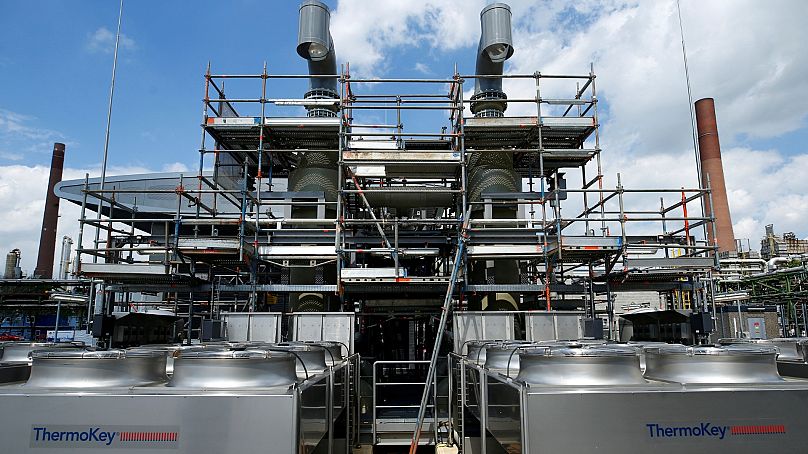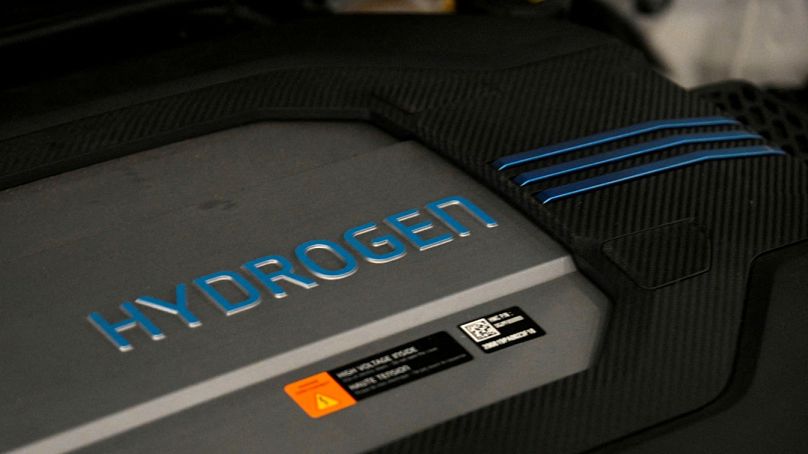If hydrogen leaks into the atmosphere, the benefits of using it over fossil fuels could be completely wiped out, scientists warn.
Made exclusively with renewable power, green hydrogen is emerging as a promising alternative to polluting fossil fuels. But this much-touted fuel of the future may have a pitfall.
Some scientists say the lack of data on leaks and the potential harm they could cause is a blind spot for the nascent industry.
At least four studies published this year say hydrogen loses its environmental edge when it seeps into the atmosphere. This is because it reduces the concentration of molecules that destroy the greenhouse gases already there, potentially contributing to global warming.
If even 10 per cent leaks during its production, transportation, storage or use, the benefits of using green hydrogen over fossil fuels would be completely wiped out, two scientists told Reuters.
They say the lack of technology for monitoring hydrogen leaks means there is a data gap, and more research is needed to calculate its net impact on global warming before final investment decisions are taken.
Yet governments and energy companies are lining up big bets on green hydrogen.
In Europe, the energy squeeze prompted by Russia's invasion of Ukraine is forcing governments to seek alternative sources of power - and the spike in gas prices has made green hydrogen appear much more affordable.
The European Union approved €5.2 billion in subsidies for green hydrogen projects in September. The United States, meanwhile, included billions of dollars of green hydrogen tax credits in its Inflation Reduction Act.
Are we ready to transition to green hydrogen?
Studies on the risk of leaks undermining green hydrogen's climate benefits have been published by Columbia University, the Environmental Defense Fund, the universities of Cambridge and Reading, and the Frazer-Nash Consultancy.
"We need much better data. We need much better devices to measure the leakage, and we need regulation which actually enforces the measurement of the leakage," says Anne-Sophie Corbeau, a researcher at Columbia University's Center on Global Energy Policy.
It estimates that leakage rates could reach up to 5.6 per cent by 2050 when hydrogen is being used more widely.
Norway's climate research institute CICERO is also working on a three-and-a-half-year study, due to conclude in June 2024, on the impact of hydrogen emissions. Maria Sand, who is leading the research, says there is a big gap in the science.
"We need to be aware of the leakages, we need some answers... There is big potential for hydrogen, we just need to know more before we make the big transition."
How common are hydrogen leaks?
Hydrogen has not been monitored for leaks in the past, and most of the odourless gas used now is made where it is consumed - but there are plans to pipe and ship it vast distances.
The fossil fuel industry hopes that hydrogen could eventually move through existing infrastructure, such as gas pipelines and liquefied natural gas import and export terminals.
About 1 per cent of the natural gas - which is mostly methane - moving through European infrastructure leaks. However, rates are higher in some countries including Russia, according to analysts and satellite images of leaks.
"There's a lot we don't know about hydrogen," says Sand. "We don't know yet if we can assume it will behave the same way as methane."
Initial results of tests in pipelines at DNV's Spadeadam research site in northern England showed that hydrogen leaks in the same places and rates as natural gas. Companies working on green hydrogen projects say, however, that careful monitoring would be needed.
Scientists and analysts say that as hydrogen molecules are much smaller and lighter than those in methane, they are harder to contain.
Once hydrogen enters pipelines, it can weaken metal pipes which can lead to cracking. Hydrogen is also far more explosive than natural gas which could create safety issues.
While potential leakages of hydrogen are not expected to be on a scale that could derail all green hydrogen plans, any seepage would erode its climate benefits, scientists say.
Green hydrogen vs grey hydrogen
Hydrogen, a highly combustible gas that can store and deliver energy, is the simplest and most abundant element on Earth, but it doesn't typically exist in its free form and must be extracted from compounds that contain it, such as water, coal, natural gas or biomass.
Producing the hydrogen long used in oil refineries, chemicals factories and the fertiliser industry relies on natural gas or coal, in processes that emit large amounts of carbon dioxide. This type of fossil-based hydrogen is often referred to as 'grey' hydrogen.
Industry experts estimate that close to 95 per cent of hydrogen production currently uses fossil fuels, and it generates as much CO2 as the emissions of the UK and Indonesia combined.
'Green' hydrogen, by contrast, is made by using renewable energy to split water into its two components - water and oxygen - through electrolysis, without producing greenhouse gases.
This type of 'clean' hydrogen could replace fossil fuel in sectors that can’t easily switch to electricity, such as steel making or heavy transport.
The chief attraction of using hydrogen as a fuel is that the main by-product is water vapour, along with small amounts of nitrogen oxides, making it far less polluting than fossil fuels - assuming it doesn't seep out.
Leaks are one of many issues plaguing the adoption of green hydrogen, besides high costs, safety concerns, and the need to invest in enough renewable energy to make it, as well as in the infrastructure to store and transport the colourless gas.
How can the risks of hydrogen leaks be assessed?
In December 2022, Brussels called for applications for funding for more research into the risks linked to a large-scale deployment of hydrogen. It asked the research to show how hydrogen could reduce global warming by replacing fossil fuels, but also how it could contribute to global warming in the event of leakages.
The Environmental Defense Fund's study, meanwhile, urged governments and businesses to gather data on hydrogen leakage rates first, then identify where the risks were highest and how to mitigate them before building the infrastructure needed.
The Frazer-Nash report also flagged how measures to prevent hydrogen leaks needed to be taken into account to allow for greater up-front and maintenance costs.
"The more we know about how to produce it in a sustainable way, and the regulation and management needed, the more it costs and therefore that limits its use unless there is no alternative," says Richard Lowes, senior associate at The Regulatory Assistance Project think-tank.
Hydrogen projects are on the rise globally
Almost 300 green hydrogen projects are under construction or have started up worldwide, but the vast majority are tiny demonstration plants, International Energy Agency data shows.
The largest is in China where Ningxia Baofeng Energy Group is using green hydrogen produced from solar power to make petrochemicals such as polyethylene and polypropylene.
Consultancy DNV forecasts that green hydrogen would need to meet about 12 per cent of the world's energy demand by 2050 to hit Paris climate targets. Based on the current pace of development and DNV's modelling of future uptake, the world is only on track to reach about 4 per cent, DNV says.
David Cebon, a professor of mechanical engineering at the University of Cambridge, says 4 per cent might be only what's "manageable", given the huge amount of renewable energy needed to make enough green hydrogen.
To replace the dirty hydrogen used now in refineries, fertiliser and chemical plants, almost double the electricity produced by every wind turbine and solar panel worldwide would be required - and that's before green hydrogen is used for anything else, such as steelmaking, transport or heating, Cebon says.
Still, the EU is considering mandates for green hydrogen's use in transport, while countries such as South Korea, Japan and China have targets for hydrogen fuel-cell vehicles.
Energy giant BP, which is planning to build multiple green hydrogen projects, including a facility in Britain due to start in 2025 known as HyGreen Teesside, says it is developing leakage monitoring systems.
"We really want to launch an effort now to assess how low can we maintain the level of leakage across a value chain and that's going to be the critical thing," says Felipe Arbelaez, senior vice president for hydrogen and carbon capture at BP.













